Why you can trust Tom's Hardware
The Zion Pro’s picture modes are represented by icons rather than names. The one that looks like a TV with rabbit ear antennas is the default mode, so I’m calling it Standard.
Grayscale and Gamma Tracking
Our grayscale and gamma tests use Calman calibration software from Portrait Displays. We describe our grayscale and gamma tests in detail here.

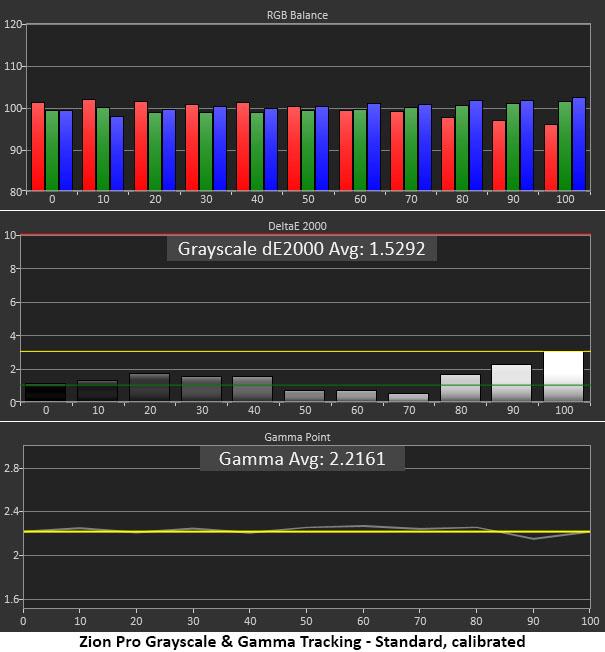
Default grayscale accuracy is pretty good here, with only a slight warm tint to gray and white patterns. The error is just visible starting at 50% brightness. Calibration isn’t strictly necessary, but it will subtly improve the image. Gamma tracks perfectly, except for a slight dip at 90%, which means that step is too light. I couldn’t see this issue in actual content.
Precise calibration is difficult to achieve because the RGB sliders have a very coarse resolution. Grayscale errors are now below the threshold of visibility and gamma is a little tighter. The difference is subtle, but I found the calibrated image had a bit more pop and texture.
Comparisons
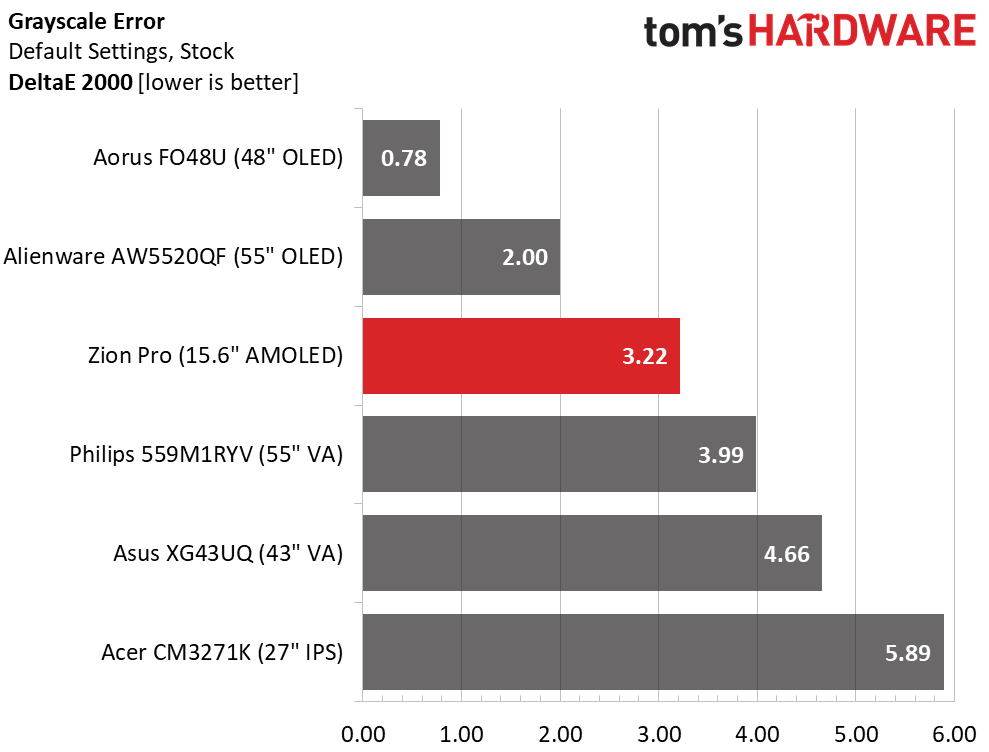
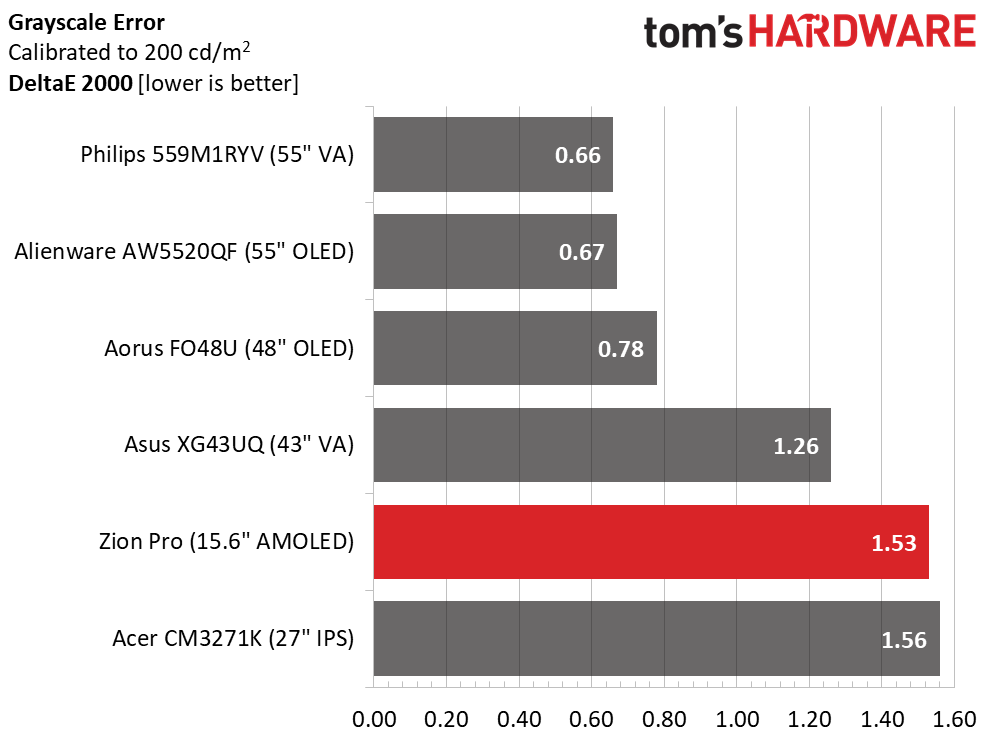
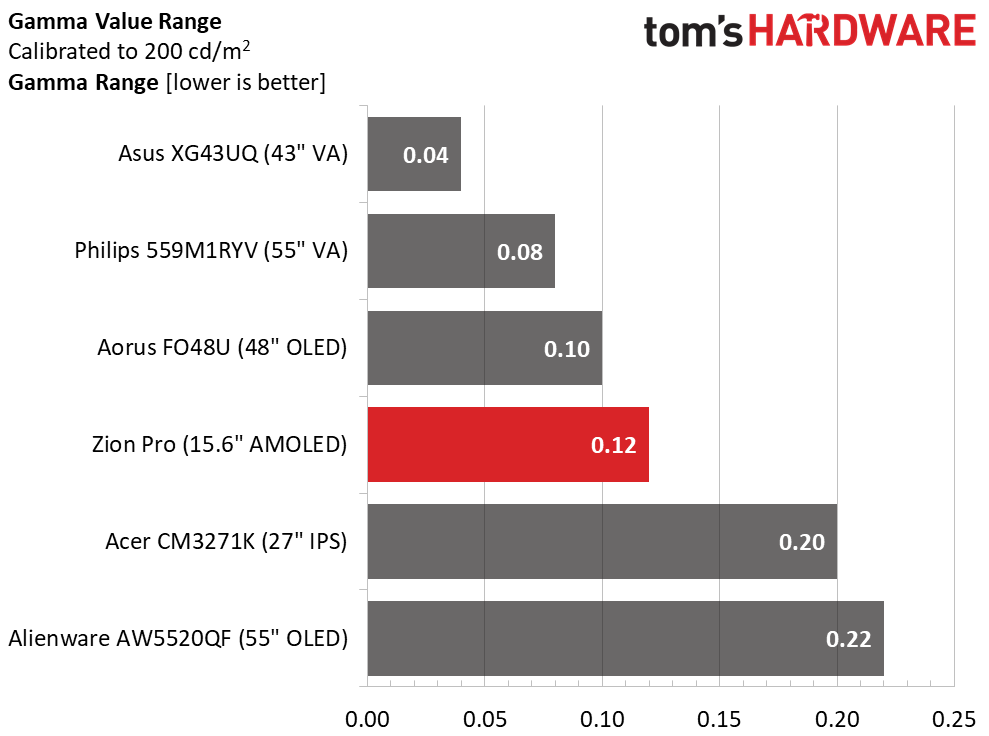
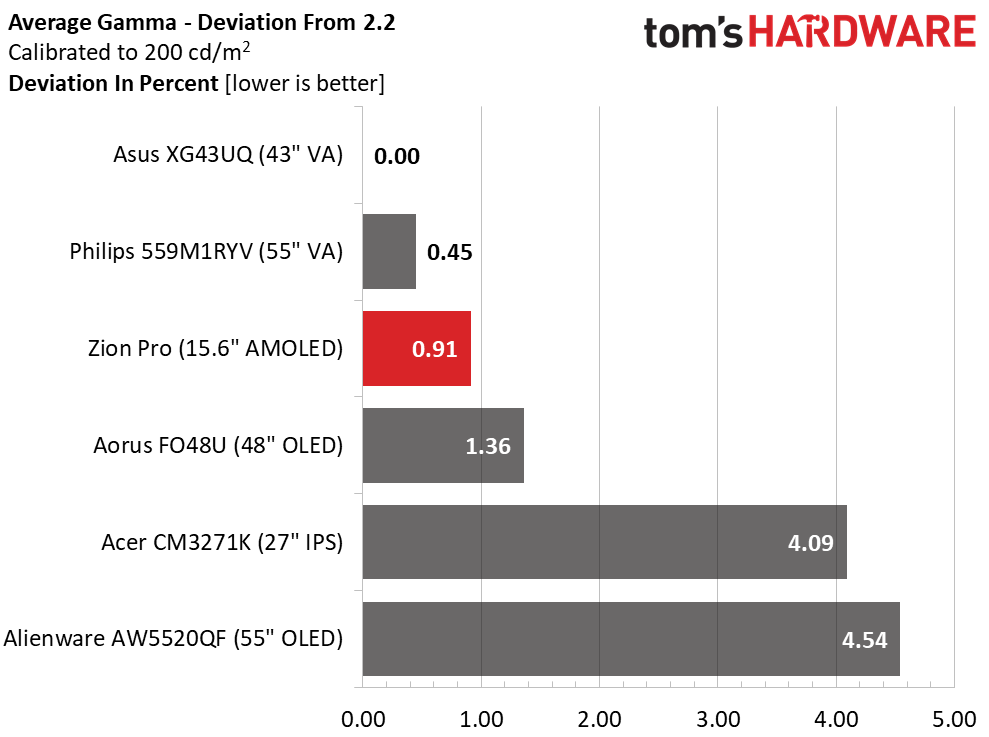
The Zion Pro comes out of the box with a 3.22dE average grayscale error. It’s just at the line between calibrate or don’t calibrate. Since its color is so saturated, a warm grayscale is less evident in most content. But with a few tweaks, I got the error down to 1.53dE and made a visible improvement.
Gamma, in either case, is excellent with a tight 0.12 range of values and a slight 0.91% deviation from 2.2. That error is only at the 90% brightness step, which means it is not visible in practice. The Zion Pro delivers solid performance in both grayscale and gamma tests.
Color Gamut Accuracy
Our color gamut and volume testing use Portrait Displays’ Calman software. For details on our color gamut testing and volume calculations, click here.
Get Tom's Hardware's best news and in-depth reviews, straight to your inbox.
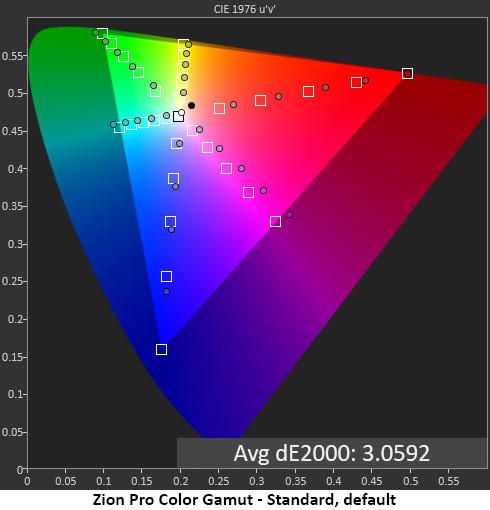
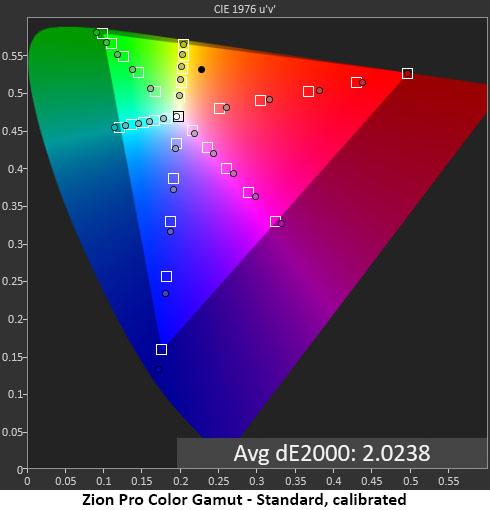
The Zion Pro has just one color gamut: large. It covers all of DCI-P3 with a little bonus green and blue. All colors are a bit over-saturated compared to the standard, but the total error is just 3.06dE. Actual content is vivid and bright with natural hues and lots of fine color shading. The only hue error is in the magenta secondary, which is a touch too red.
Calibration removes all hue errors and tames the blue and red saturation a little. The difference is subtle, but the picture is visibly improved. This is excellent performance.
Comparisons
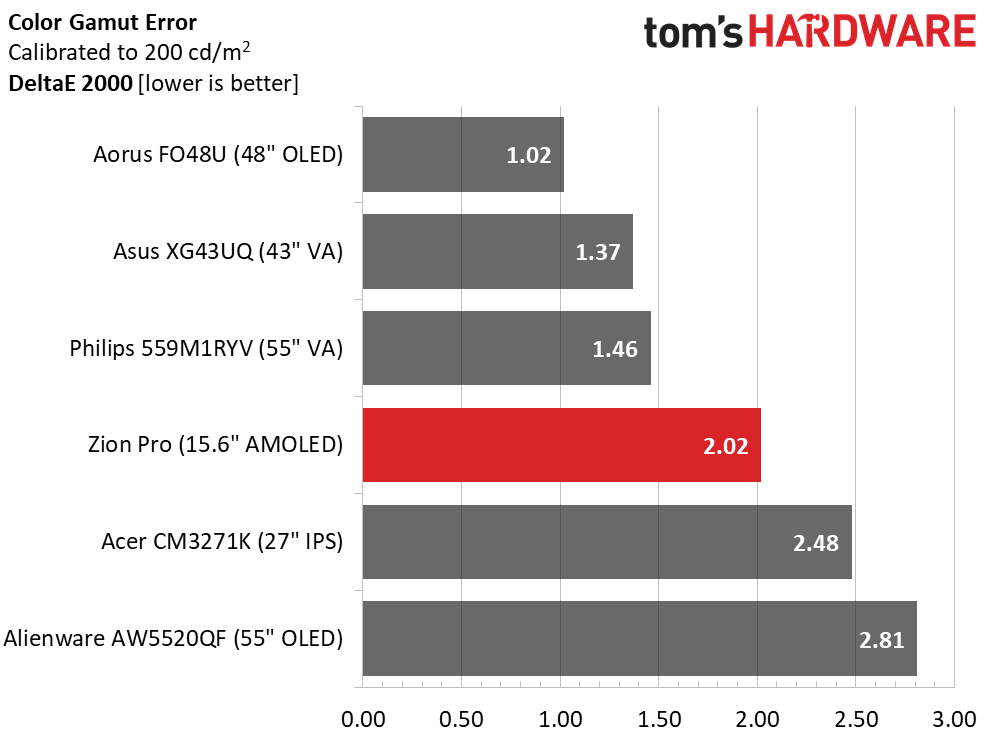
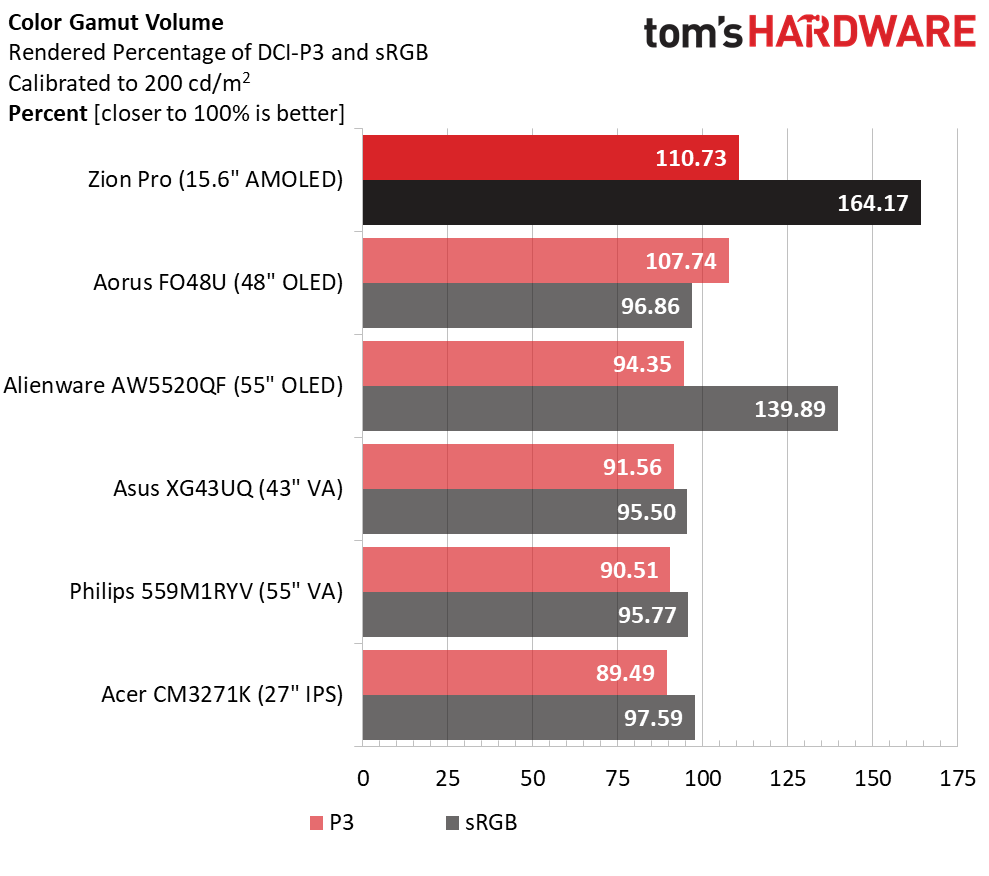
With a 2.02dE average color error, the Zion Pro sits right in the middle of the pack. None of the screens have visible issues so, in side-by-side comparisons, color looks similar.
The difference comes in the volume test. The Zion Pro and Aorus screens are close in volume, but the Alienware has less green than the top two screens. All three OLEDs have more color than the LCDs in the group. However, this result is not a general indication that OLED has more color than LCD. I’ve measured a few IPS screens that top 100% of DCI-P3. For accuracy, the Zion Pro is qualified for color-critical work, but I suggest using a compensation profile for absolute precision.
Current page: Grayscale, Gamma and Color
Prev Page Brightness and Contrast Next Page HDR Performance
Christian Eberle is a Contributing Editor for Tom's Hardware US. He's a veteran reviewer of A/V equipment, specializing in monitors. Christian began his obsession with tech when he built his first PC in 1991, a 286 running DOS 3.0 at a blazing 12MHz. In 2006, he undertook training from the Imaging Science Foundation in video calibration and testing and thus started a passion for precise imaging that persists to this day. He is also a professional musician with a degree from the New England Conservatory as a classical bassoonist which he used to good effect as a performer with the West Point Army Band from 1987 to 2013. He enjoys watching movies and listening to high-end audio in his custom-built home theater and can be seen riding trails near his home on a race-ready ICE VTX recumbent trike. Christian enjoys the endless summer in Florida where he lives with his wife and Chihuahua and plays with orchestras around the state.
-
helper800 A portable 4k touchscreen OLED with 110% DCI-P3 color coverage at 400 nits? That's a homerun for sure even at 600 dollars. Where is the 27-32 inch 16:9 or 34 inch 21:9 version of this? 120hz? VRR? Please make my dreams come true!Reply -
Sleepy_Hollowed Holy... this is an absolutely insane product that I almost want to buy on impulse, without actually having a need for it.Reply
If I traveled a lot, one or two of these would be mandatory for work and entertainment. -
hannibal Wel 27" is not portable anymore!Reply
:)
The only problem is that this is KS, so you may get the product or you give money to hoax company... So you will buy $600 lottery ticket and hope for the best... KS is not somthing where you get money back, unless the company is honest... Even using credit card does not help, because you buy promise, not the product itself.
There are some nasty examples: https://www.kickstarter.com/projects/248983394/ossic-x-the-first-3d-audio-headphones-calibrated-t